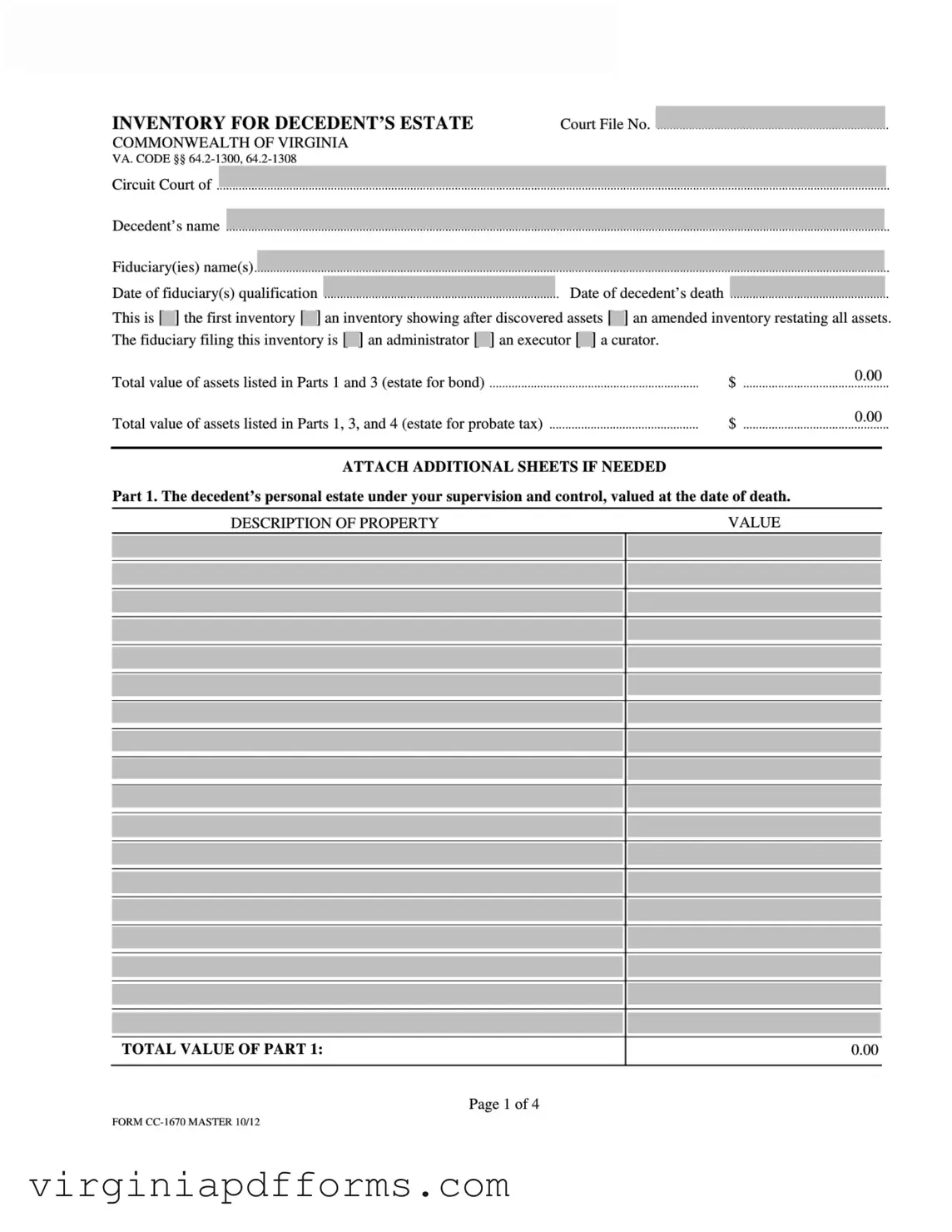Fill in a Valid Virginia Estate Cc 1670 Template
The Virginia Estate CC 1670 form is a legal document used to report the inventory of a decedent's estate. It serves to provide a detailed account of the assets under the fiduciary's supervision, which may include personal property, multiple party accounts, and non-Virginia real estate. Accurate completion of this form is essential for compliance with Virginia estate laws and ensures that all interested parties are informed of the estate's contents.
Access My Document Now
